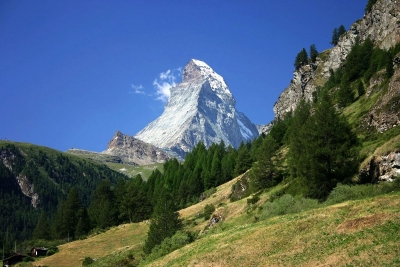
Located completely within the continent of Europe, the Alps mountain range runs over 1,000 km. Though it stretches across several countries from France to Albania, Switzerland and Austria are considered the Alpine heartland. At its widest, the Alps is spread more than 200 km, making the total area of the region nearly 2,00,000 sq.km. Given its vastness, a minimum of 75 summits in the region are believed to be 4,000 mt above sea level. The Alps is very crucial to Europe due to several reasons such as a source of water for drinking, irrigation, and hydroelectric power. The Alps is marked by varied mountain elevations, giving rise to diverse and contrasting natural topograpy and climate. Given that this range is also a source of many European rivers, it has a significant role to play in the continent’s natural environment.
Wildlife
Nearly 35 % of Europe’s plant species can be found in the Alps, with more than 300 of them endemic to the region. This is indicative of a healthy and diverse ecosystem rich in not just plant life but also animal life. Despite the landscapes experiencing extreme weather, the Alps nutures a wide variety of wildlife. Nearly 30,000 wildlife species are said to have been identified in the region, out of which over 50 % are invertebrates. More than a dozen species of reptiles and amphibians each can be found in the region, in addition to over 75 species each of mammals and fish. Also, the region welcomes nearly 200 varieties of nesting birds. Some of the most prominent species in the area are red deer, fox, chamois, ibex, wild sheep, bear, wolf, lynx, mountain hare, and marmot. Birds such as golden eagle, bearded vultures, ptarmigan, and black grouse are also found in the region.
Threats
The earliest travellers to the Alps are said to have been drawn to its pristine beauty. But, time and again, it has been proven that human presence invariably has a negative impact on any region. And the signs of this was first visible around the mid-20th Century in the Alps. As more and more people visited the Alps, its degradation began Pollution of air and water, and tangible noise pollution too are said to have been increasing since. There has also been a spike in the amount of biodegradable and non-biodegradable waste in the region, affecting both the local people and the flora and fauna. Further, the setting up of resorts, roads, and skiing slopes, have increased the frequency of slope erosion. Not just that such constructions also cause fragmentation of habitats for the wildlife. Also, with increase in population, forests and riparian lands are turned into agricultural lands or residential areas. This alters waterways, changing the natural environment of the region, affecting both humans and wildlife. Most importantly, global warming has been particularly impacting mountain ranges worldwide, and it is no different in the Alps. Changes in the patterns of rain and snow have been observed, and extreme weather events such as floods and avalanches have shown frequencies and intensities not witnessed earlier.
Picture Credit : Google




